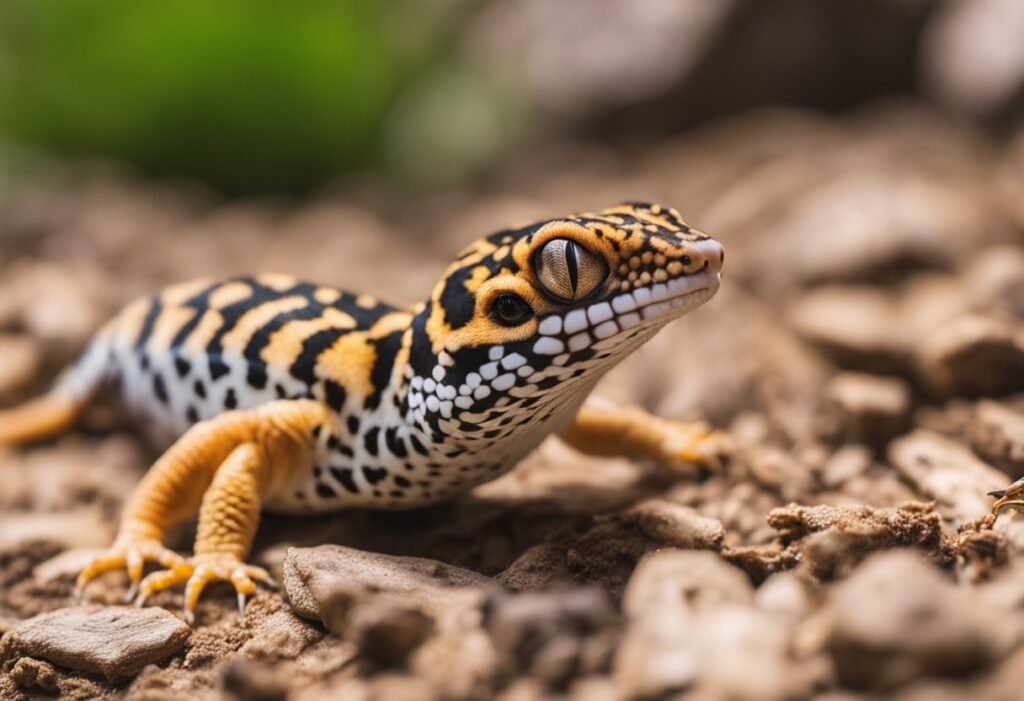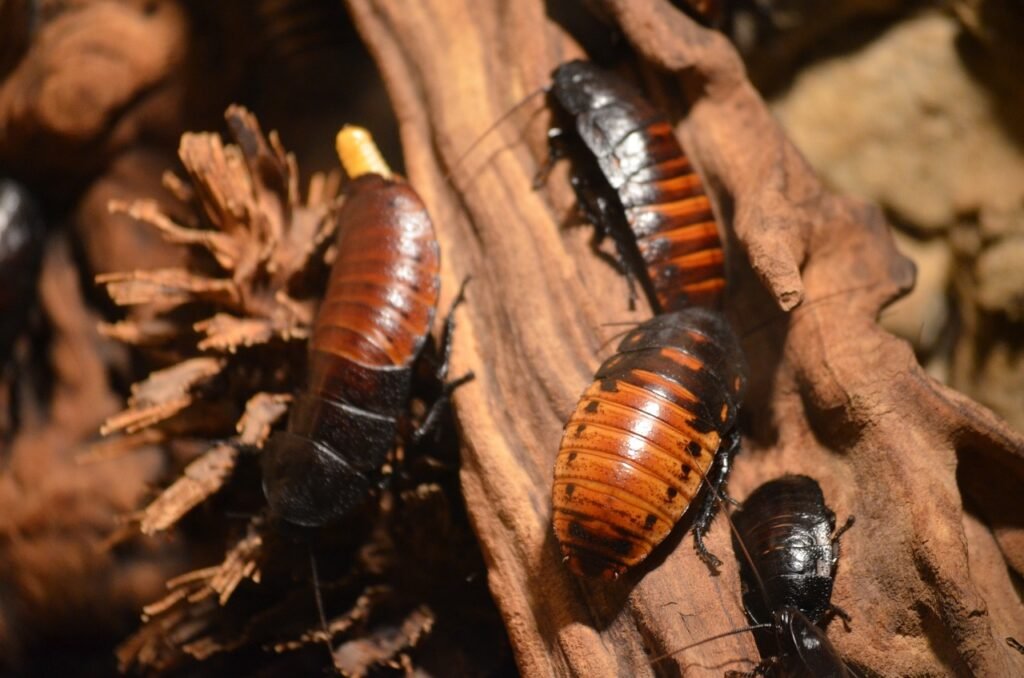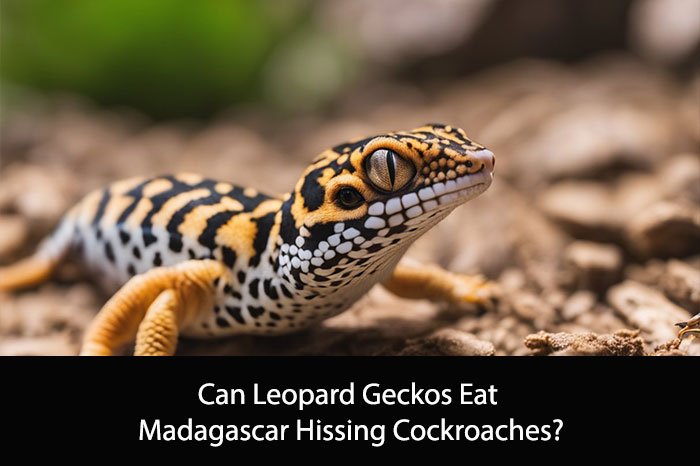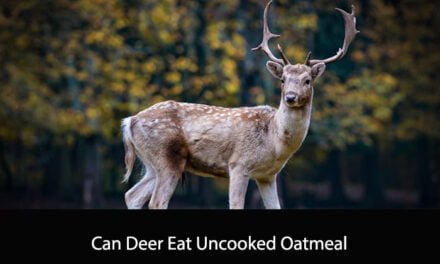Leopard geckos are fascinating creatures that make great pets. One of the most common questions that new owners have is what to feed their geckos. While there are many different types of food that leopard geckos can eat, one that often comes up is Madagascar hissing cockroaches. In this article, we will explore whether or not leopard geckos can eat these insects.
Madagascar hissing cockroaches are a popular food source for many different reptiles and amphibians. They are high in protein and other essential nutrients that these animals need to thrive. However, when it comes to leopard geckos, the answer is not quite as straightforward. While some geckos may be able to eat these cockroaches without any issues, others may not be able to tolerate them. In the following paragraphs, we will delve deeper into the potential risks and benefits of feeding Madagascar hissing cockroaches to leopard geckos.
Leopard Gecko Dietary Basics

Leopard geckos are insectivores, meaning they primarily eat insects. It’s important to provide them with a balanced and varied diet to ensure they receive all the necessary nutrients for good health.
Nutritional Requirements
Leopard geckos require a diet high in protein and low in fat. They also need calcium and vitamin D3 to maintain strong bones and prevent metabolic bone disease. It’s important to offer a variety of insects to ensure they receive all the necessary nutrients.
Here’s a table of some commonly fed insects and their nutritional value:
| Insect | Protein | Fat | Calcium | Phosphorus |
|---|---|---|---|---|
| Crickets | 21% | 6% | 75mg/100g | 270mg/100g |
| Dubia Roaches | 35% | 7% | 200mg/100g | 200mg/100g |
| Superworms | 20% | 17% | 100mg/100g | 250mg/100g |
| Mealworms | 20% | 13% | 10mg/100g | 250mg/100g |
Feeding Frequency and Amount
Leopard geckos should be fed every 2-3 days. Younger geckos will require more frequent feedings than adults. It’s important not to overfeed as obesity can lead to health problems.
As a general rule, feed your gecko as many insects as they can eat in a 15 minute period. If there are uneaten insects after this time, remove them from the enclosure to prevent them from bothering your gecko.
In conclusion, providing a balanced and varied diet is important for the health of your leopard gecko. By offering a variety of insects and feeding them in moderation, you can ensure your gecko receives all the necessary nutrients for a long and healthy life.
Madagascar Hissing Cockroaches as Feed
When it comes to feeding leopard geckos, it’s important to provide them with a balanced diet that meets their nutritional needs. While insects such as crickets, mealworms, and dubia roaches are commonly fed to leopard geckos, some owners may consider using Madagascar hissing cockroaches as a food source. In this section, we will discuss the nutritional profile, safety, and suitability of Madagascar hissing cockroaches as feed for leopard geckos.
Nutritional Profile
Madagascar hissing cockroaches are high in protein and low in fat, making them a good source of nutrition for leopard geckos. They also contain essential vitamins and minerals, including calcium, which is important for maintaining strong bones. However, it’s important to note that the nutritional content of Madagascar hissing cockroaches can vary depending on their diet. If they are fed a poor diet, their nutritional value may decrease.
Safety and Suitability
While Madagascar hissing cockroaches are safe for leopard geckos to eat, there are some things to consider before using them as a food source. First, they are larger than other insects commonly fed to leopard geckos, which may make them difficult for some geckos to swallow. Additionally, they have a hard exoskeleton that may be difficult for some geckos to digest. It’s important to monitor your gecko’s behavior and health when feeding them Madagascar hissing cockroaches to ensure they are able to consume and digest them properly.
In conclusion, Madagascar hissing cockroaches can be a nutritious addition to a leopard gecko’s diet, but they should be used with caution. It’s important to consider your gecko’s individual needs and behavior before introducing them to this type of insect. As always, it’s recommended to consult with a veterinarian or experienced reptile keeper before making any significant changes to your gecko’s diet.
Preparing Cockroaches for Feeding

When feeding our leopard geckos, it is important to ensure that their food is nutritious and safe for consumption. One of the food options for leopard geckos are Madagascar hissing cockroaches. Here, we will discuss how to properly prepare cockroaches for feeding.
Gut Loading
Gut loading is the process of feeding insects with highly nutritious food that will then be passed on to the animal that consumes them. This can be done by feeding the cockroaches with fresh fruits and vegetables, such as carrots, apples, and leafy greens. It is also recommended to use a commercial gut loading product, which can be found at most pet stores.
It is important to gut load the cockroaches at least 24 hours before feeding them to our leopard geckos. This ensures that the cockroaches are packed with nutrients that will benefit our pets.
Size Considerations
When feeding leopard geckos with Madagascar hissing cockroaches, it is important to consider the size of both the cockroach and the gecko. Adult leopard geckos can consume adult cockroaches, but juvenile geckos should be fed with smaller cockroaches.
It is recommended to feed adult leopard geckos with cockroaches that are no larger than the width of their head. Juvenile geckos should be fed with cockroaches that are smaller in size, such as nymphs.
In conclusion, preparing cockroaches for feeding requires gut loading them with nutritious food and considering the size of the cockroach and the leopard gecko. By following these guidelines, we can ensure that our pets are receiving a healthy and balanced diet.
Health Benefits and Risks
Potential Benefits
Leopard geckos are insectivorous and require a diet that is high in protein. Madagascar hissing cockroaches are a good source of protein and can be fed to leopard geckos as part of a balanced diet. These cockroaches are also low in fat and contain essential nutrients such as calcium and phosphorus, which are important for the health of leopard geckos.
Possible Risks
While feeding Madagascar hissing cockroaches to leopard geckos can provide nutritional benefits, there are also potential risks to consider. These cockroaches are known to carry parasites and bacteria that can be harmful to leopard geckos. It is important to ensure that any cockroaches fed to leopard geckos are properly gut-loaded and free of any harmful pathogens.
Additionally, leopard geckos may not be able to digest the exoskeleton of larger cockroaches, which can lead to impaction and other digestive issues. It is recommended to only feed appropriately sized cockroaches to leopard geckos and to monitor their digestion closely.
Overall, while Madagascar hissing cockroaches can be a nutritious addition to a leopard gecko’s diet, it is important to weigh the potential benefits against the possible risks and to take appropriate precautions to ensure the health and well-being of your pet.
Feeding Techniques
Live Prey Feeding
When feeding leopard geckos, it is important to provide them with live prey that is appropriate for their size and nutritional needs. Madagascar hissing cockroaches can be a suitable food source for adult leopard geckos, but it is important to ensure that the cockroaches are healthy and free from any diseases or parasites.
When offering live prey, it is important to supervise the feeding process to ensure that the leopard gecko is able to catch and consume the prey without any issues. We recommend offering the prey in a separate feeding container to prevent any accidental ingestion of substrate or other foreign objects.
Handling and Hygiene
When handling live prey, it is important to practice good hygiene to prevent the spread of any diseases or parasites. We recommend washing your hands before and after handling the prey, as well as using separate feeding utensils for each animal to prevent cross-contamination.
It is also important to ensure that the leopard gecko is not stressed during the feeding process. We recommend offering live prey during the evening or night when leopard geckos are most active and hungry.
In summary, feeding leopard geckos live prey such as Madagascar hissing cockroaches can be a suitable option, but it is important to ensure that the prey is healthy and free from any diseases or parasites. Additionally, practicing good hygiene and offering the prey during the appropriate time can help ensure a successful feeding process for your leopard gecko.
Alternative Food Options
Commercial Diets
While leopard geckos are primarily insectivores, it’s important to ensure they receive a balanced diet. One option for providing a well-rounded diet is to use commercial diets. These diets come in the form of pellets or powders that can be mixed with water to create a paste or gel that is then fed to the gecko.
When choosing a commercial diet, it’s essential to ensure that it is specifically formulated for leopard geckos. Some commercial diets are designed for other reptiles and may not provide the necessary nutrients for leopard geckos. It’s also important to note that commercial diets should not be the sole source of food for your leopard gecko.
Other Live Prey Choices
In addition to crickets and mealworms, there are several other live prey options that can be fed to leopard geckos. These include dubia roaches, waxworms, and superworms. It’s important to ensure that any live prey offered to your gecko is appropriately sized and not too large, as this can cause digestive issues.
Another option for live prey is the use of feeder insects such as black soldier fly larvae or silkworms. These insects are high in protein and can provide a nutritious addition to your leopard gecko’s diet.
One thing to keep in mind when offering live prey is the risk of parasites. It’s essential to purchase live prey from a reputable source and to ensure that they are gut-loaded and free of any parasites before offering them to your gecko.
Overall, while Madagascar hissing cockroaches are not recommended as a food source for leopard geckos, there are several alternative options available that can provide a balanced and nutritious diet.
Frequently Asked Questions
Are Madagascar hissing cockroaches safe for leopard geckos to consume?
Yes, it is safe for leopard geckos to consume Madagascar hissing cockroaches. These cockroaches are not toxic and do not pose any danger to leopard geckos as long as they are properly prepared.
What is the nutritional value of hissing cockroaches for leopard geckos?
Madagascar hissing cockroaches are a good source of protein for leopard geckos. They also contain some fat and fiber, but they are not a significant source of vitamins or minerals.
How should Madagascar hissing cockroaches be prepared for a leopard gecko’s diet?
Madagascar hissing cockroaches should be gut-loaded with nutritious food before being fed to leopard geckos. They should also be dusted with calcium and vitamin supplements. It is recommended to offer them live or freshly killed.
What size hissing cockroach is appropriate for feeding to a leopard gecko?
The size of the hissing cockroach should be appropriate for the size of the leopard gecko. As a general rule, the cockroach should be no larger than the space between the leopard gecko’s eyes.
How frequently can leopard geckos be fed Madagascar hissing cockroaches?
Madagascar hissing cockroaches can be fed to leopard geckos as part of their regular diet. However, they should not be the sole source of food. It is recommended to offer them once or twice a week.
Are there any risks associated with feeding hissing cockroaches to leopard geckos?
There are some risks associated with feeding hissing cockroaches to leopard geckos. The cockroaches may carry parasites or diseases, so it is important to obtain them from a reputable source. Additionally, they may cause impaction if they are too large or not properly prepared.





